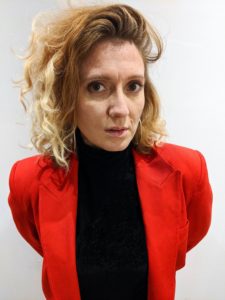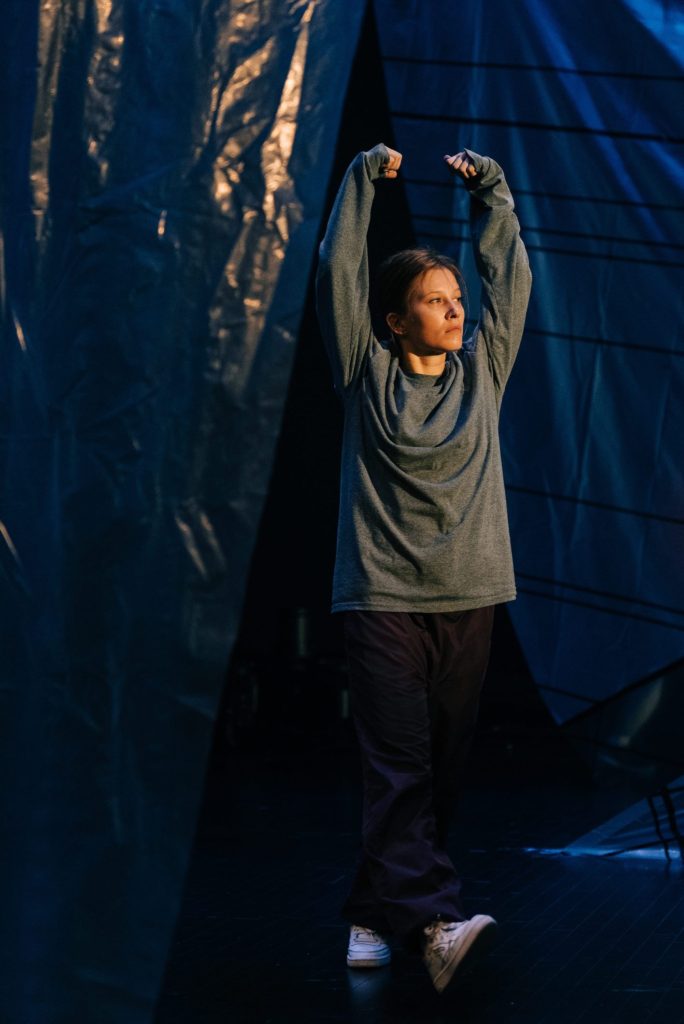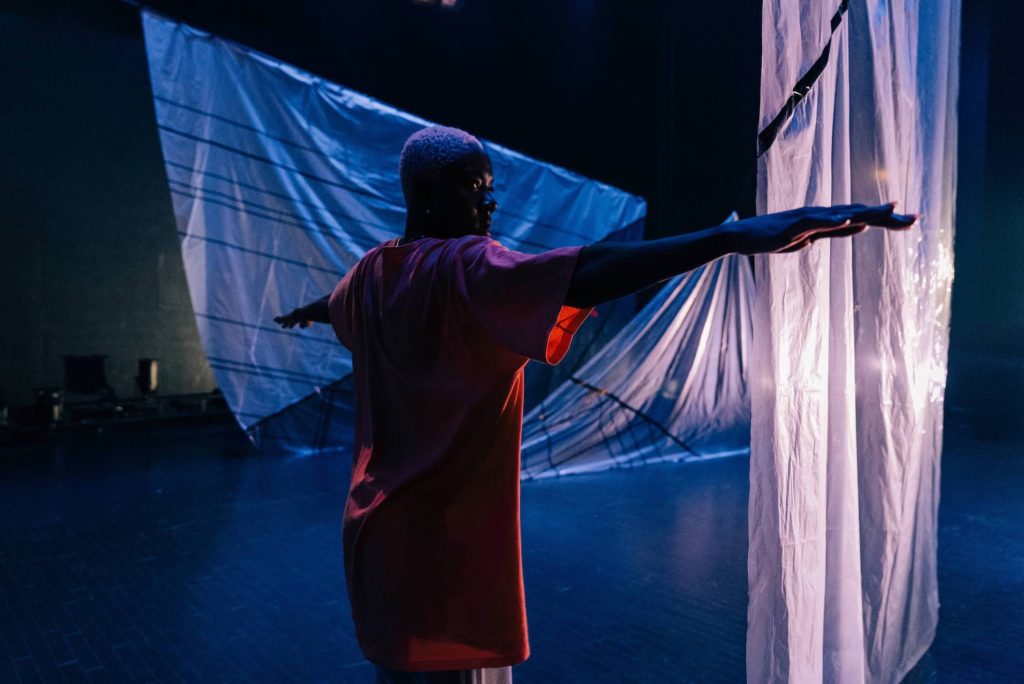Creating in Chaotic Times: Helen Simard, Papillon and the real world - Vancouver Ballet Society
- Home
- Features 2020 - 2023
- Creating in Chaotic Times: Helen Simard, Papillon and the real world

By Victor Swoboda
Opportunity in the arts sometimes knocks at unexpected doors. Montreal choreographer Helen Simard heard the knocking last March when the COVID-19 pandemic abruptly closed all theatres as well as the rehearsals of her new trio, Papillon, for the company she co-founded and co-directs with musician Roger White, We All Fall Down. Simard initially felt shock, but she also saw a chance to use her newly restricted environment to advantage. Papillon deals with concepts of chaos, and order amid disorder. The unexpected lockdown and the doubts surrounding the short- and long-term future of live stage performance put a real face to her abstract creative thoughts.
“If I was using any other process, the show would have been over, but Papillon is about the unexpected and looking for meaning in seemingly random events,” she recalled in an interview before a mid-October rehearsal at La Chapelle, where Papillon will have its live-streaming premiere on November 5, with rebroadcasts on demand November 13-15. Seven performances in front of a live audience that were scheduled to start on October 29 had to be cancelled at the last minute because the Quebec government extended its restrictions on theatre audiences.

A former b-girl with Montreal group Solid State, Simard for the past several years has explored contemporary choreography, most notably in creations inspired by the music of iconic punk rocker Iggy Pop. She began Papillon after she became curious to see how dancers with different training backgrounds might handle a given gesture. “I was inspired by how much a dancer brings to the [creative] process with their singularity, creativity and training, and by how much they bring to my own choreographic vision.”
She filmed herself improvising and selected 12 one-minute clips to use as a movement basis for her three dancers to interpret and create their solos in Papillon.
Simard had finished working on the solo with hip-hop dancer Nindy Banks and was half-way through the solo with popper Mecdy Jean-Pierre when the lockdown hit. To finish Jean-Pierre’s solo and to proceed with the third soloist, b-girl Victoria Mackenzie, Simard began holding online sessions on Zoom. If Simard had delayed, she risked losing her government grant for Papillon.
All three dancers are thirtyish so the internet was part of their formative cultural lives. Adapting to Zoom rehearsals came almost naturally.
“These dancers are used to dancing outside a theatre — in a community centre, on the street,” says Simard. “They watch videos of friends across the world, and document and watch themselves improvising. I think they have a different attachment to a [rehearsal] space than stage dancers. They also often train at home. Victoria, for example, has a linoleum floor in her backyard.”

Although Simard, who is older, at first found it awkward working on Zoom, the process became “quite magical,” she says. “On a screen, you have to work hard to be attentive when you’re giving feedback. I found the connections were more profound than what happens in a studio. We had to really trust and listen to each other.”
Simard worked from her computer screen. The dancers sometimes worked using their phones.
“I would give improv prompts and they’d go off and work for an hour. Then we would all Zoom together and they would share their new moves, which I would record so they could watch each other’s work and distinguish similarities and differences. That way, we could see what someone else had inspired them to bring out of themselves. It was a lovely process.”
During rehearsals at La Chapelle, all three dancers were simultaneously onstage without masks. Throughout the piece, one dancer performed downstage, another was mid-stage and the third was upstage. Sheets of transparent plastic hanging at staggered intervals from the ceiling separated them: set designer Robin Fisher brought in the plastic sheets as a way to let the dancers approach closer than the one-metre distance allowed under COVID-19 regulations, and also as a design element, to create a sense of spatial depth. Others involved in the rehearsal wore masks, including the percussionist and two keyboard players.

To promote some notion of spatial depth during the livestream, four or five mobile camera operators will shoot from different angles. “Our production partner, Danse-Cité, got money for the cameras from the Quebec arts council, CALQ. We didn’t want a ‘flat’ look on screen,” says Simard.
In rehearsal, Simard directed various dancer configurations. “Say, one person fast, another slow, another on the diagonal. The show’s choreography is a spontaneous working exercise with a very clear and precise movement vocabulary, dramaturgical arc and spatial configuration.”
If the provincial government suddenly decides to forbid allowing three performers onstage at the same time, Simard has prepared a scenario in which only one or two dancers occupy the stage during the live-streaming. “Whenever the guidelines shift, so do we,” Simard says. “I think that says something about the way as artists we learn to cope with the real world.”

